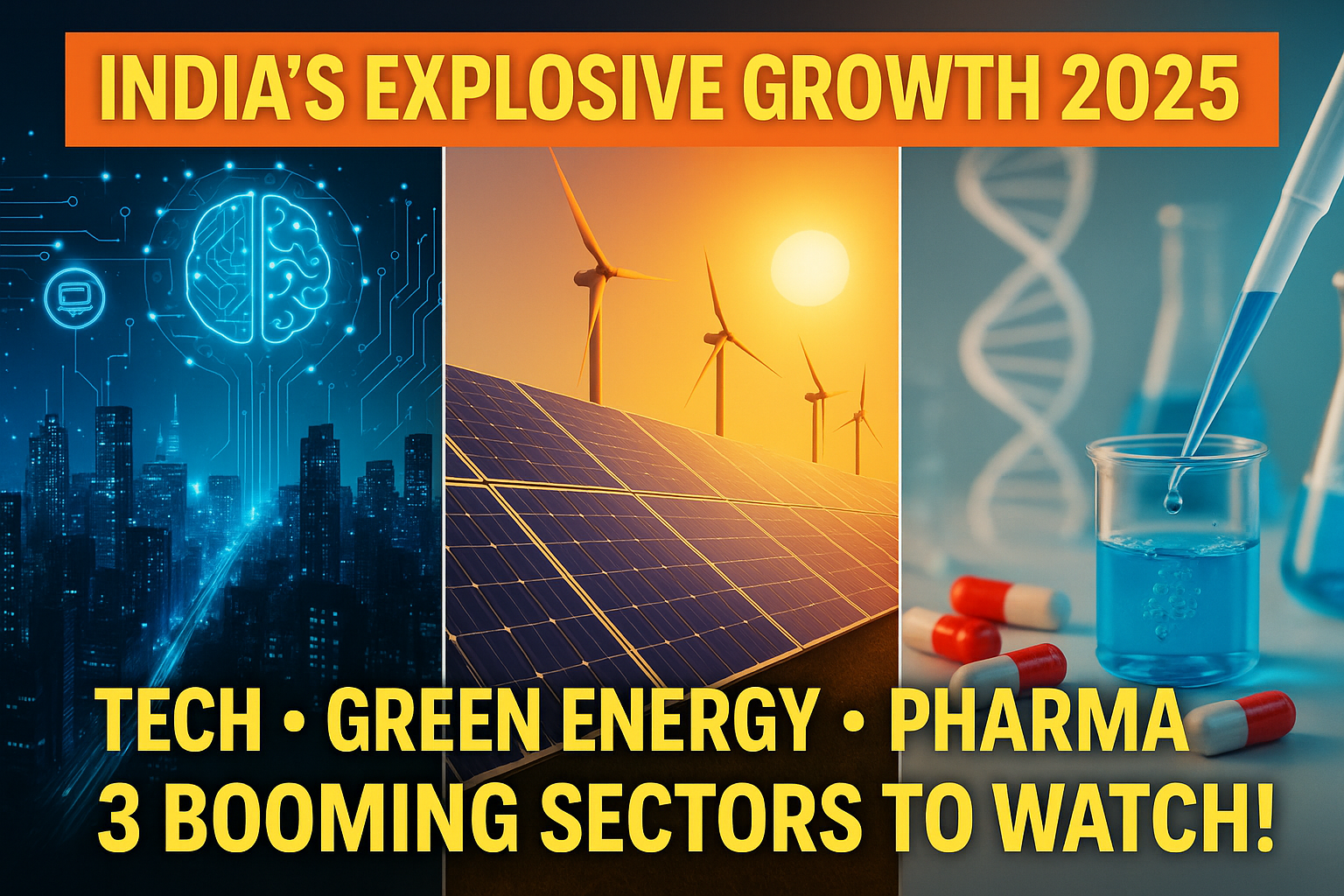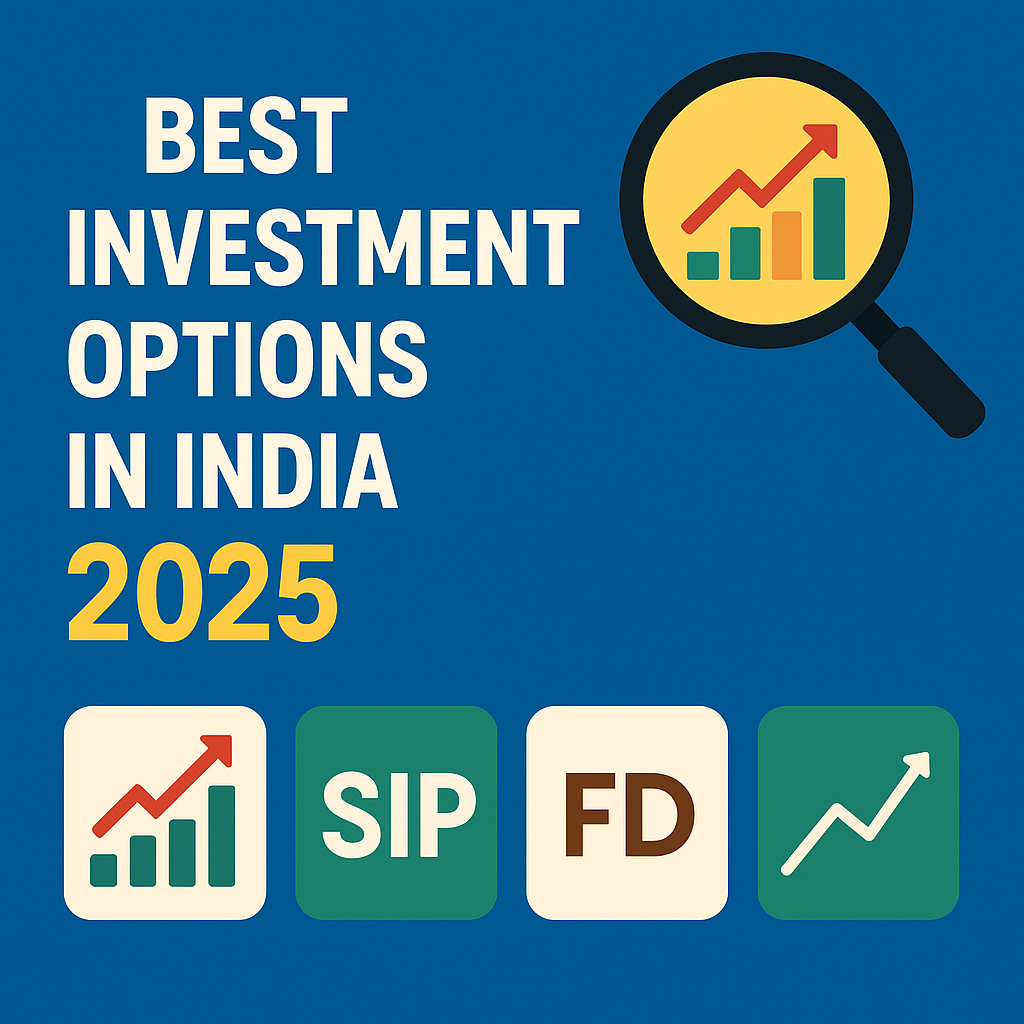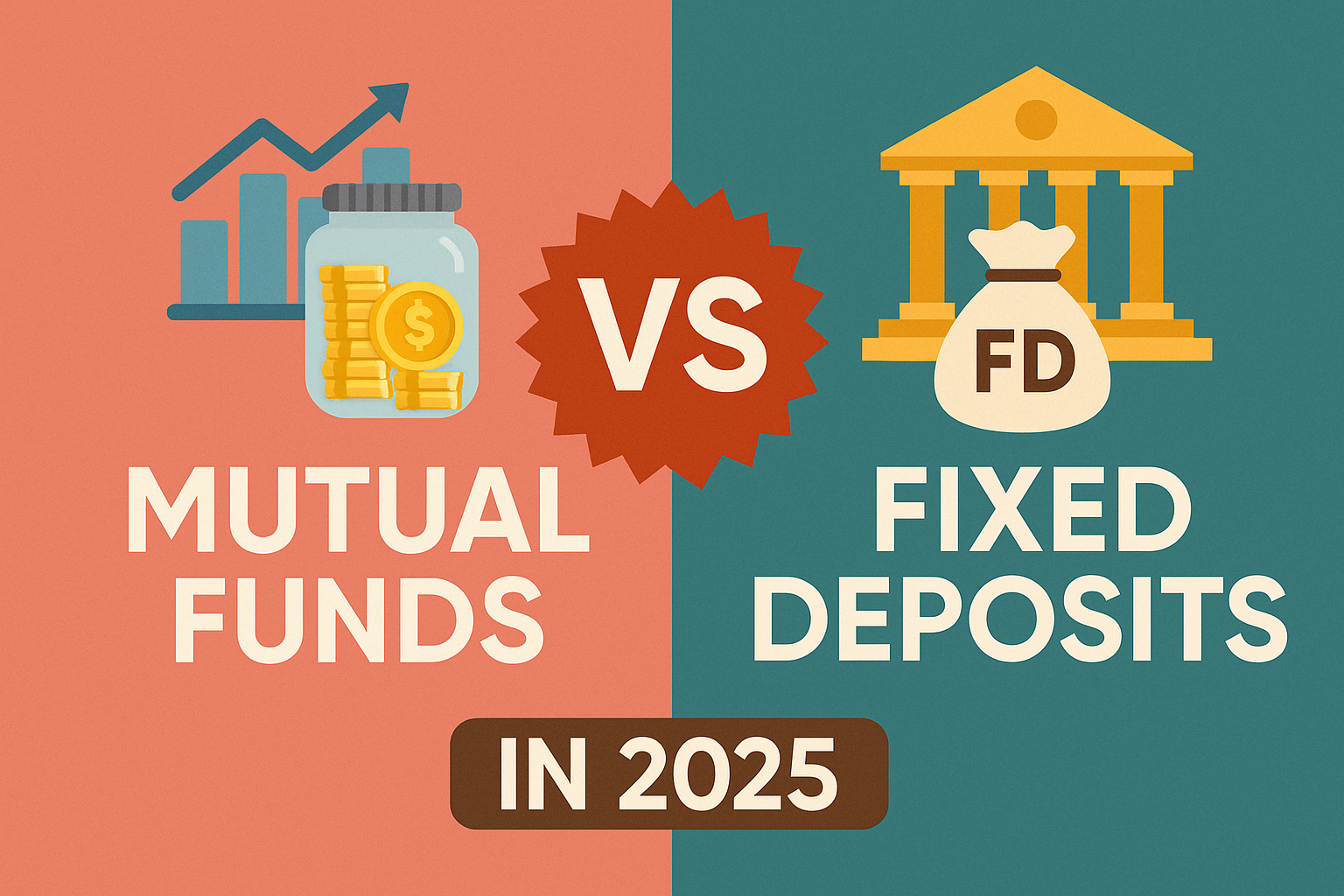The year 2025 is poised to be a landmark for India’s economy, with significant growth anticipated in the technology, renewable energy, and pharmaceutical sectors. India’s vast digitally savvy population and government initiatives are driving this growth, creating a fertile ground for innovation and investment.

The tech sector is expected to lead the charge, driven by a growing talent pool and increasing demand for digital solutions. Meanwhile, the renewable energy sector is set to benefit from favorable government policies and a global shift towards sustainability. The pharmaceutical sector is also on track for significant growth, driven by increasing demand for healthcare products.
Key Takeaways
- India’s economy is expected to continue its meteoric growth in 2025.
- The tech sector is poised for significant growth driven by a digitally savvy population.
- Renewable energy is set to benefit from favorable government policies.
- The pharmaceutical sector is on track for growth driven by increasing demand.
- Government initiatives are supporting growth across these sectors.
The Economic Transformation of India Through2025
India’s journey towards becoming a $5 trillion economy is gaining momentum, driven by key sectors and government initiatives. The country’s economic transformation is a multifaceted process, involving various stakeholders and strategic investments.
Current GDP Metrics and Growth Trajectory
As of the latest estimates, India’s GDP stands at approximately $3.5 trillion, with a growth trajectory that is expected to continue through 2025. The economic growth is driven by a combination of factors, including a young population, increasing urbanization, and a rising middle class. The government has set ambitious targets, aiming to achieve a $5 trillion economy by 2025, which translates to a significant annual growth rate.
The current GDP metrics indicate a robust growth momentum, with various sectors contributing to the overall expansion. The services sector remains a significant contributor, while manufacturing and agriculture are also showing signs of growth. The government’s focus on infrastructure development and policy reforms is expected to further boost economic activity.
Key Sectors Driving the $5 Trillion Economy Vision
Several key sectors are driving India’s economy towards the $5 trillion vision. These include:
- Technology and IT Services: With a significant contribution to GDP and export earnings, the tech sector is a major driver of growth.
- Renewable Energy: India’s commitment to renewable energy is not only driving growth but also positioning the country as a leader in clean energy.
- Pharmaceuticals: The pharma sector is a significant contributor to India’s economy, with a strong focus on exports and innovation.
- Manufacturing: The government’s ‘Make in India’ initiative is aimed at boosting manufacturing, creating jobs, and driving economic growth.
These sectors are expected to play a crucial role in achieving the $5 trillion economy vision, driven by government support, innovation, and investment. As India continues on its growth trajectory, it is poised to become an increasingly important player on the global economic stage.
India’s Explosive Growth2025: Why Tech, Renewables & Pharma Are the Hottest Sectors
The Indian economy is on the cusp of a significant transformation, with the tech, renewables, and pharma sectors leading the charge towards 2025. These sectors are not only driving growth but also attracting substantial investments from global investors.
Comparative Growth Rates and Investment Returns
The tech, renewables, and pharma sectors in India are experiencing rapid growth, outpacing many other industries. According to recent data, the tech sector is expected to grow at a CAGR of 15% through 2025, while the renewables sector is projected to expand at a CAGR of 20%. The pharma sector, known for its robust manufacturing capabilities, is anticipated to grow at a CAGR of 12%.
| Sector | CAGR 2020-2025 | Investment Attraction |
|---|---|---|
| Tech | 15% | High |
| Renewables | 20% | Very High |
| Pharma | 12% | High |
As noted by industry experts, “The growth trajectory of these sectors is not just impressive but also indicative of India’s potential to become a global hub for technology, renewable energy, and pharmaceuticals.” This sentiment is echoed by investors who are keenly watching India’s progress.
Strategic Importance for Global Investors
For global investors, India’s tech, renewables, and pharma sectors offer strategic opportunities that are hard to ignore. The country’s vast market, coupled with its growing innovation ecosystem, makes it an attractive destination for investments.
“India’s growth story is compelling, with its tech, renewables, and pharma sectors offering a unique blend of growth potential and strategic importance. Global investors are increasingly recognizing the value of being part of this journey.”
Nandan Nilekani, Infosys Co-Founder
The comparative growth rates and investment returns in these sectors underscore their significance. With the Indian government implementing policies to support growth, these sectors are poised to continue their upward trajectory.

Tech Sector: Digital Revolution Transforming India’s Economy
India’s tech sector is on the cusp of a revolution, driven by its vast and growing digitally savvy population. The country’s 900+ million internet users are creating a massive demand for digital services, driving innovation and growth in the tech industry.
900+ Million Internet Users Driving Market Demand
The sheer number of internet users in India is a significant driver of the tech sector’s growth. As more people come online, there’s an increasing demand for digital services, including e-commerce, online education, and digital entertainment. This demand is fueling the growth of startups and established tech companies alike.
The digitally savvy population is not just driving demand but also contributing to the supply side by developing new technologies and services. Innovation hubs and tech incubators are sprouting across the country, nurturing a culture of entrepreneurship and innovation.
7.3% GDP Contribution and Growth Projections for 2025
The tech sector’s contribution to India’s GDP has been significant, standing at 7.3% in FY2024. This contribution is expected to grow further as the sector continues to expand. Projections for 2025 indicate that the tech industry will continue to be a major driver of economic growth, with potential areas of growth including artificial intelligence, cybersecurity, and cloud computing.
As the tech sector grows, it is also expected to create new job opportunities, both directly and indirectly, contributing to the overall economic development of the country. The government’s initiatives to support the tech industry, such as the Digital India program, are further expected to boost the sector’s growth.
Government Initiatives Powering India’s Tech Ecosystem
India’s tech landscape is being revolutionized by a series of government initiatives aimed at fostering growth, innovation, and digital inclusion. These programs are designed to create a robust tech ecosystem that can compete globally.
Digital India Program and Rural Connectivity via BharatNet
The Digital India program is a flagship initiative that seeks to transform the country into a digitally empowered society. A key component of this program is the BharatNet project, which aims to provide high-speed broadband connectivity to rural areas through a robust optical fiber network.
Key Highlights of BharatNet:
- Connecting over 250,000 gram panchayats
- Enabling digital services in rural India
- Improving governance through e-governance initiatives

Production Linked Incentive (PLI) Scheme for Hardware and AI
The Production Linked Incentive (PLI) Scheme is another significant government initiative designed to boost domestic manufacturing in critical areas such as hardware and artificial intelligence (AI). By offering incentives to companies that set up or expand manufacturing facilities in India, the government aims to reduce dependence on imports and increase exports.
Key Benefits of the PLI Scheme:
- Increased domestic manufacturing capacity
- Job creation in the tech sector
- Enhanced competitiveness of Indian industries globally
Deep Tech Startup Policy and Innovation Funding
The Deep Tech Startup Policy is focused on nurturing innovation and supporting startups that are working on cutting-edge technologies. This policy includes provisions for funding, mentorship, and infrastructure support to help these startups grow and succeed.
Key Features of the Deep Tech Startup Policy:
- Access to funding and grants
- Mentorship programs
- Infrastructure support for research and development
By implementing these initiatives, the Indian government is creating a conducive environment for the tech industry to thrive, driving innovation, and positioning the country as a significant player in the global tech landscape.
India’s 5.4 Million Tech Talent Pool: The Innovation Engine
India’s 5.4 million-strong tech talent pool is the driving force behind the country’s innovation engine. This vast reservoir of skilled engineers and tech professionals is fueling the growth of startups, driving technological advancements, and positioning India as a global tech hub.
Engineering Education and Specialized Skills Development
The foundation of India’s tech talent pool lies in its robust engineering education system. With over 4,000 engineering colleges, India produces a large number of graduates every year, equipped with the skills required to drive innovation in the tech industry. Specialized skills development programs in areas like AI, machine learning, and data science are further enhancing the capabilities of this talent pool.
Key statistics highlighting India’s engineering education:
| Category | Number | Growth Rate |
|---|---|---|
| Engineering Colleges | 4,000+ | 5% annually |
| Annual Engineering Graduates | 1.5 million | 8% annually |
| Skilled Tech Professionals | 5.4 million | 12% annually |
Startup Culture and Entrepreneurial Ecosystem
India’s startup culture is thriving, thanks in part to its vast tech talent pool. The country has seen a surge in the number of startups, with many achieving unicorn status. The entrepreneurial ecosystem is being supported by initiatives like incubators, accelerators, and funding programs, making it easier for startups to innovate and grow.
The impact of startup culture on India’s economy:
- Creation of new job opportunities
- Innovation in technology and services
- Attraction of foreign investment
- Development of new industries and sectors
As India’s tech talent pool continues to grow, it is expected to drive further innovation and economic growth. The combination of a strong engineering education system, specialized skills development, and a thriving startup culture positions India as a leader in the global tech industry.
Emerging Technologies Reshaping India’s Digital Landscape by2025
As India hurtles towards a digital future, emerging technologies are set to revolutionize its landscape by 2025. The country’s digital transformation is being driven by several key technologies, including artificial intelligence (AI), blockchain, cloud computing, and cybersecurity.
AI Adoption in 75% of Enterprises by 2025
AI is expected to be adopted by 75% of Indian enterprises by 2025, transforming business operations and customer interactions. This widespread adoption will be driven by the need for improved efficiency, reduced costs, and enhanced customer experiences. AI-powered solutions will be instrumental in driving innovation across various sectors, including healthcare, finance, and manufacturing.
37% Annual Growth in Blockchain Applications
Blockchain technology is another emerging trend in India’s digital landscape, with applications expected to grow at an annual rate of 37%. The use of blockchain will enhance transparency, security, and efficiency in various industries, including supply chain management, finance, and healthcare. Blockchain-based solutions will help reduce fraud, improve traceability, and increase trust among stakeholders.
Cloud Computing and Cybersecurity Market Expansion
The cloud computing market in India is poised for significant growth, driven by the increasing demand for scalable and flexible IT infrastructure. As more businesses move to the cloud, the need for robust cybersecurity measures will also rise. The cybersecurity market is expected to expand rapidly, with a focus on protecting against advanced threats and ensuring data privacy.

| Emerging Technology | Growth Projection | Key Applications |
|---|---|---|
| AI | 75% adoption by 2025 | Business process automation, customer service |
| Blockchain | 37% annual growth | Supply chain management, finance, healthcare |
| Cloud Computing | Rapid expansion | Scalable IT infrastructure, data storage |
| Cybersecurity | Rapid expansion | Threat protection, data privacy |
In conclusion, emerging technologies are set to transform India’s digital landscape by 2025. The adoption of AI, blockchain, cloud computing, and cybersecurity will drive innovation, improve efficiency, and enhance customer experiences across various sectors.
5G Rollout: $17 Billion Economic Boost by2025
As India embarks on its 5G journey, the country is likely to witness substantial economic growth. The rollout of 5G technology is expected to boost India’s economy by $17 billion by 2025, driven by various factors including infrastructure development, IoT applications, and strategic tech partnerships.
Infrastructure Development and Coverage Projections
The infrastructure development required for 5G is vast, encompassing not just the installation of new cell towers and fiber optic cables but also the enhancement of existing network infrastructure. This development is expected to create numerous jobs and stimulate economic activity across the country.
Projections indicate that 5G coverage will reach a significant portion of the population, enabling widespread adoption of high-speed internet services. This, in turn, will facilitate the growth of various industries that rely on high-bandwidth, low-latency connections.
IoT Applications and Smart City Initiatives
The advent of 5G will significantly accelerate the development of IoT applications, enabling a wide range of services from smart homes to industrial automation. Cities will become smarter, with infrastructure managed more efficiently through real-time data analytics.
Smart city initiatives will benefit greatly from 5G, as it will provide the necessary connectivity for various urban services, including transportation, energy management, and public safety. This will not only improve the quality of life for citizens but also make cities more attractive to businesses and investors.
US-India Tech Partnerships in 5G Development
The development and implementation of 5G technology in India are expected to be bolstered by US-India tech partnerships. Collaboration between the two countries in areas such as technology development, infrastructure deployment, and regulatory frameworks will be crucial for the successful rollout of 5G services.
These partnerships will not only facilitate the transfer of technology but also open up new avenues for investment and cooperation in the telecom sector. This collaboration is expected to drive innovation, enhance competitiveness, and contribute to the overall economic growth of both nations.
Renewable Energy Sector: India’s Green Growth Engine
India’s commitment to renewable energy is evident in its aggressive capacity expansion targets and the resultant growth in the sector. As the country continues to push towards achieving 500 GW of renewable energy capacity by 2030, the current capacity stands at an impressive figure, setting the stage for significant growth.
Current Capacity and 2025 Expansion Targets
As of now, India has made substantial progress in its renewable energy journey. The current renewable energy capacity is a testament to the country’s dedication to reducing its carbon footprint and transitioning to cleaner energy sources. By 2025, India aims to further expand its renewable energy capacity, with several projects already underway.
- Renewable Energy Capacity: Currently stands at over 250 GW, with solar and wind energy being the major contributors.
- Expansion Targets: India is on track to achieve 500 GW of renewable energy capacity by 2030, with significant milestones to be achieved by 2025.
- Government Initiatives: Policies and initiatives such as tax incentives and subsidies are being implemented to support the growth of the renewable energy sector.

Investment Landscape and Foreign Direct Investment Trends
The investment landscape for renewable energy in India is becoming increasingly attractive, with both domestic and foreign investors showing keen interest. Foreign Direct Investment (FDI) has been a significant driver of growth in the sector, bringing in much-needed capital and technology.
- Investment Trends: There is a growing trend of investments in solar and wind energy projects, driven by the government’s push for clean energy.
- FDI Inflows: India has seen a substantial increase in FDI inflows into the renewable energy sector, reflecting global confidence in the country’s growth potential.
- Project Pipeline: A robust pipeline of renewable energy projects is being developed, offering numerous opportunities for investors.
The renewable energy sector is poised to be a key driver of India’s economic growth, with the potential to create millions of jobs and stimulate local economies. As the country continues on its path towards achieving its renewable energy targets, the sector is expected to attract even more investment and innovation.
Solar Power Dominance in India’s Renewable Portfolio
Solar energy is revolutionizing India’s renewable portfolio, driven by ambitious targets and technological advancements. As the country strives to meet its renewable energy goals, solar power has emerged as a crucial component, offering a cleaner and more sustainable alternative to traditional energy sources.
Utility-Scale Projects and Distributed Generation
India’s solar energy landscape is characterized by both utility-scale projects and distributed generation. Utility-scale solar projects involve large-scale installations that feed electricity directly into the grid, while distributed generation focuses on smaller, localized systems that power homes and businesses.
Key Highlights:
- Utility-scale projects are driving the bulk of solar capacity additions, with several large parks being developed across the country.
- Distributed generation is gaining traction, particularly in rural areas where it provides energy access and reduces reliance on diesel generators.
The growth of both utility-scale and distributed solar projects is supported by government incentives and a declining technology cost, making solar energy increasingly competitive with fossil fuels.
Manufacturing Capacity and Technology Innovation
To support its ambitious solar targets, India is also focusing on enhancing its domestic manufacturing capacity. The government has introduced policies such as the Production Linked Incentive (PLI) scheme to encourage local production of solar modules and cells.
| Year | Manufacturing Capacity (GW) | Technology Advancements |
|---|---|---|
| 2023 | 5 | Bifacial modules adoption |
| 2025 | 10 | Advanced cell technology |
| 2030 | 20 | Integration of AI in manufacturing |
The table illustrates the projected growth in solar manufacturing capacity and highlights key technology advancements expected in the coming years. As manufacturing capacity expands, India is poised to become a significant player in the global solar supply chain.
The future of solar power in India looks promising, with continued support from the government and private sector driving innovation and growth.
Diversifying Renewable Sources: Wind, Hydro, and Green Hydrogen
Beyond solar power, India is exploring other renewable sources to meet its ambitious energy targets. The country’s renewable energy strategy is becoming increasingly diversified, with significant investments in wind, hydro, and green hydrogen.

Offshore Wind Energy Development by 2025
India is poised to make significant strides in offshore wind energy development by 2025. The government has announced plans to auction offshore wind energy blocks, marking a crucial step towards harnessing the potential of wind power. This initiative is expected to attract substantial investments and create new opportunities for companies operating in the renewable energy sector.
The development of offshore wind energy is part of India’s broader strategy to diversify its renewable energy mix. With its long coastline, India has a significant advantage in terms of offshore wind potential. The government’s plans include setting up infrastructure for offshore wind farms, which will not only contribute to the renewable energy targets but also create jobs and stimulate local economies.
Pumped Storage and Hydropower Modernization
In addition to wind energy, India is also focusing on pumped storage and hydropower modernization. Pumped storage projects are crucial for balancing the grid and ensuring a stable supply of electricity. These projects involve pumping water to a higher reservoir during off-peak hours and releasing it during peak hours to generate electricity.
The modernization of hydropower plants is another key area of focus. India’s existing hydropower infrastructure is being upgraded to improve efficiency and increase capacity. This not only enhances the overall performance of the plants but also ensures that they can meet the growing demand for electricity.
Green Hydrogen National Mission and Applications
The Green Hydrogen National Mission is a significant initiative aimed at promoting the production and use of green hydrogen in India. Green hydrogen is produced by electrolysis using renewable energy, making it a clean and sustainable fuel. The mission includes setting up production facilities, developing infrastructure, and promoting the use of green hydrogen in various sectors such as transportation and industry.
The applications of green hydrogen are diverse, ranging from fuel for vehicles to feedstock for industrial processes. The use of green hydrogen can significantly reduce greenhouse gas emissions and help India achieve its climate commitments. The government is working with private sector companies to develop the green hydrogen ecosystem and create new opportunities for investment and innovation.
Policy Framework Driving India’s Clean Energy Transition
The Indian government has established a strong policy foundation for clean energy transition, aiming to achieve a sustainable and environmentally friendly energy mix by 2025. This framework is crucial for driving investments in renewable energy and reducing the country’s carbon footprint.
Renewable Purchase Obligations and Energy Storage Mandates
One of the key policies driving India’s clean energy transition is the Renewable Purchase Obligation (RPO). RPO requires distribution companies and other obligated entities to purchase a certain percentage of their electricity from renewable sources. This policy has been instrumental in promoting the adoption of renewable energy in India.
Energy Storage Mandates are another critical component of India’s clean energy policy framework. By promoting energy storage solutions, the government aims to address the intermittency of renewable energy sources and ensure a stable power supply.
| Year | RPO Target (%) | Energy Storage Capacity (GWh) |
|---|---|---|
| 2023 | 22 | 10 |
| 2024 | 25 | 15 |
| 2025 | 30 | 20 |
Carbon Market Development and Climate Commitments
India is also making significant strides in carbon market development. By creating a market for carbon credits, the government aims to provide a financial incentive for reducing greenhouse gas emissions. This initiative is expected to play a crucial role in achieving India’s climate commitments under the Paris Agreement.
The development of a carbon market in India will not only help in reducing emissions but also attract international investments in clean energy projects.
US-India Clean Energy Finance and Technology Collaboration
The collaboration between the US and India on clean energy finance and technology is another vital aspect of India’s clean energy transition. This partnership aims to leverage the expertise and resources of both countries to accelerate the development and deployment of clean energy technologies.
Through joint research initiatives and investment programs, the US-India clean energy collaboration is expected to drive innovation and reduce the costs associated with clean energy technologies.
Pharmaceutical Industry: India’s Position as the “Pharmacy of the World”
With a strong foundation in pharmaceutical manufacturing, India is emerging as a key player in the global pharmaceutical landscape. The country’s pharmaceutical industry has grown significantly over the years, driven by its ability to produce high-quality, affordable medicines.
Global Market Share and Export Growth Projections
India is the world’s third-largest pharmaceutical industry by volume, with a growing global market share. The industry’s export growth projections are promising, with expectations of continued expansion into new markets.
Current Global Market Share: India’s pharmaceutical industry accounts for a significant share of the global market, with a strong presence in generics.
| Year | Global Market Share (%) | Export Growth Rate (%) |
|---|---|---|
| 2020 | 3.5 | 10 |
| 2025 | 4.2 | 12 |
| 2030 | 5.0 | 15 |
Manufacturing Capabilities and Quality Standards
India’s pharmaceutical manufacturing capabilities are renowned for their quality and cost-effectiveness. The industry adheres to stringent quality standards, ensuring compliance with global regulatory requirements.
Key Manufacturing Strengths:
- State-of-the-art production facilities
- Skilled workforce with expertise in pharmaceutical production
- Strong supply chain and distribution networks

As India continues to strengthen its position as the “Pharmacy of the World,” its pharmaceutical industry is poised for sustained growth, driven by its manufacturing prowess and commitment to quality.
Growth Catalysts for India’s Pharma Sector Through2025
Several growth catalysts are expected to propel India’s pharma sector to new heights by 2025. The Indian pharmaceutical industry is experiencing a significant transformation, driven by factors such as rising healthcare awareness, increasing exports, and a growing demand for cost-effective medicines.

R&D Investments and Patent Filings Trends
One of the key drivers of growth in India’s pharma sector is the increasing investment in research and development (R&D). The trend of rising R&D investments is expected to continue, with a focus on innovative products and technologies. This is reflected in the growing number of patent filings by Indian pharmaceutical companies, indicating a shift towards more innovative and complex products.
Rising R&D investments are crucial for the development of new drugs and therapies, enabling Indian companies to compete globally. The growth in patent filings is a positive indicator of the sector’s innovation capabilities.
Generic Drug Exports and New Market Penetration
Generic drug exports have been a significant contributor to India’s pharmaceutical industry’s growth. The country’s generic drug manufacturing capabilities are well-regarded globally, making it an important player in the international pharmaceutical market. Indian companies are also expanding their presence in new markets, further boosting exports.
The penetration of new markets is facilitated by India’s competitive pricing and the quality of its pharmaceutical products. As a result, Indian pharmaceutical companies are well-positioned to capitalize on the growing demand for affordable medicines worldwide.
Domestic Healthcare Expansion and Insurance Coverage
The domestic healthcare landscape is also undergoing significant changes, with an expansion in healthcare services and insurance coverage. The growth in healthcare insurance is increasing access to healthcare services, driving demand for pharmaceutical products.
The Indian government’s initiatives to improve healthcare infrastructure and increase insurance coverage are expected to have a positive impact on the pharmaceutical industry. As healthcare access expands, the demand for medicines is likely to rise, benefiting the pharma sector.
High-Value Pharmaceutical Segments Poised for Explosive Growth
The Indian pharmaceutical industry is on the cusp of a revolution, driven by high-value segments such as biosimilars, biologics, Contract Research and Manufacturing Services (CRAMS), and digital health integration. These segments are not only expected to drive growth but also transform the industry’s landscape.

Biosimilars and Biologics Development Pipeline
The biosimilars market in India is anticipated to witness significant growth due to the increasing demand for affordable biologics. Biosimilars are biological products that are highly similar to and have no clinically meaningful differences from existing FDA-approved biologics. India’s pharmaceutical companies are investing heavily in the development of biosimilars, with several products in the pipeline.
Biologics, being complex molecules, offer new treatment options for various diseases, including cancer and autoimmune disorders. The development of biologics is a costly and complex process, but it provides significant opportunities for companies that can navigate the regulatory landscape successfully.
Contract Research and Manufacturing Services (CRAMS)
CRAMS is another high-value segment that is gaining traction in India. The country’s strong talent pool in pharmaceuticals, coupled with its cost-competitive manufacturing capabilities, makes it an attractive destination for global pharmaceutical companies looking to outsource their research and manufacturing needs.
Indian companies are enhancing their capabilities in CRAMS by investing in state-of-the-art infrastructure and adopting advanced technologies. This not only helps in improving the quality of services but also in expanding the capacity to handle complex projects.
Digital Health Integration and Telemedicine
Digital health integration, including telemedicine, is revolutionizing healthcare delivery in India. With the government’s push towards digitalization and the increasing penetration of smartphones and internet connectivity, telemedicine is becoming a viable option for patients, especially in remote areas.
The integration of digital health technologies is not only improving access to healthcare but also enhancing patient outcomes. It is also creating new opportunities for pharmaceutical companies to engage with healthcare providers and patients through digital channels.
In conclusion, high-value pharmaceutical segments such as biosimilars, biologics, CRAMS, and digital health integration are poised for explosive growth in India. These segments are expected to drive the industry’s growth, improve healthcare outcomes, and create new opportunities for pharmaceutical companies.
Challenges and Risk Factors for India’s Growth Sectors
India’s explosive growth story is not without its challenges, as regulatory and infrastructural issues come to the fore. Despite the promising outlook for tech, renewables, and pharma, several risk factors could potentially impede progress.

Regulatory Hurdles and Policy Implementation Gaps
The Indian government has introduced numerous policies to boost growth, but implementation gaps remain a significant challenge. Regulatory hurdles, such as complex bureaucratic processes and inconsistent policy enforcement, can deter investment and hinder growth.
- Inconsistent application of policies across states
- Lengthy approval processes for projects
- Need for greater transparency in regulatory decisions
Infrastructure Limitations and Supply Chain Vulnerabilities
India’s infrastructure development has not kept pace with its economic growth, leading to bottlenecks in transportation and logistics. This not only increases costs but also makes supply chains more vulnerable to disruptions.
- Inadequate transportation networks
- Reliance on inefficient logistics services
- Vulnerability to natural disasters and global supply chain disruptions
Global Competition and Trade Tensions
As India seeks to become a global hub for industries like tech and pharma, it faces intense global competition. Trade tensions and protectionist policies in other countries can also impact India’s export-driven growth.
- Rising competition from other emerging markets
- Impact of global trade policies on Indian exports
- Need for India to negotiate favorable trade agreements
In conclusion, while India’s growth sectors hold immense potential, addressing these challenges will be crucial to realizing the $5 trillion economy vision by 2025.
Investment Strategies for US Investors in India’s High-Growth Sectors
As US investors look to capitalize on India’s burgeoning economy, it’s essential to understand the most effective investment strategies for tapping into the country’s high-growth sectors. India’s economic transformation presents a unique opportunity for investors to tap into emerging industries such as technology, renewable energy, and pharmaceuticals.

Direct Investment vs. Market-Based Approaches
US investors can choose between direct investment and market-based approaches when entering the Indian market. Direct investment involves establishing or acquiring a business operation in India, allowing for control over the investment and potential for high returns. In contrast, market-based approaches involve investing through the stock market or other financial instruments, offering liquidity and diversification.
Each approach has its advantages and challenges. Direct investment requires significant resources and local market knowledge but can provide a competitive edge. Market-based approaches offer flexibility and easier entry but may be subject to market volatility.
Partnership Models and Joint Ventures
Forming partnerships or joint ventures with local businesses is another viable strategy for US investors. These collaborations can provide access to local expertise, networks, and regulatory knowledge, mitigating some of the risks associated with entering a new market. Partnership models can be particularly effective in industries where local connections are crucial, such as in the renewable energy sector.
When considering a partnership or joint venture, it’s essential to carefully evaluate potential partners, assess the terms of the agreement, and define clear objectives to ensure a successful collaboration.
Long-term ROI Projections and Exit Strategies
US investors should also consider long-term ROI projections and develop clear exit strategies when investing in India’s high-growth sectors. Understanding the potential return on investment and having a plan for exiting the investment can help mitigate risks and maximize returns.
Exit strategies may include selling the investment to a local company, listing on the stock exchange, or merging with another business. Having a well-defined exit plan can help investors navigate the complexities of the Indian market and achieve their financial goals.
Conclusion: Navigating India’s Economic Transformation Through2025
India’s economy is poised for significant growth, driven by sectors like technology, renewable energy, and pharmaceuticals. As the country continues on its path to becoming a $5 trillion economy, investors and businesses are presented with vast opportunities.
Navigating India’s economic transformation requires understanding the key drivers of growth. The technology sector, with its vast talent pool and government initiatives, is set to revolutionize the economy. Renewable energy, particularly solar power, is another area with immense potential, driven by government policies and investment.
The pharmaceutical industry, known as the “pharmacy of the world,” is expected to continue its growth trajectory, driven by exports and domestic demand. As India’s economy transforms, US investors can capitalize on these opportunities through strategic partnerships and investments.
By understanding the trends and growth prospects in these key sectors, businesses and investors can navigate India’s economic transformation and tap into its vast potential.
FAQ
What is driving the growth of India’s technology sector in 2025?
India’s vast digitally savvy population, government initiatives like the Digital India program, and investments in emerging technologies are driving the growth of the tech sector.
What are the key growth drivers for the Indian tech industry?
The key growth drivers include a large digitally savvy population, government initiatives, and the adoption of emerging technologies like AI, blockchain, and cloud computing.
How is India’s renewable energy policy supporting the growth of the clean energy sector?
India’s renewable energy policy, including renewable purchase obligations and energy storage mandates, is supporting the growth of the clean energy sector by promoting investment and development.
What is the significance of India’s position as the “Pharmacy of the World”?
India’s position as the “Pharmacy of the World” signifies its dominance in the global pharmaceutical industry, driven by its manufacturing capabilities, quality standards, and export growth projections.
What are the growth catalysts for India’s pharma sector through 2025?
The growth catalysts include R&D investments, generic drug exports, and domestic healthcare expansion, driven by government initiatives and investments.
What are the high-value pharmaceutical segments poised for explosive growth?
The high-value segments include biosimilars, biologics, Contract Research and Manufacturing Services (CRAMS), and digital health integration, driven by innovation and investment.
What are the challenges and risk factors facing India’s growth sectors?
The challenges and risk factors include regulatory hurdles, infrastructure limitations, and global competition, which need to be addressed to sustain growth.
What are the investment strategies for US investors in India’s high-growth sectors?
US investors can consider direct investment, partnership models, and joint ventures, with a focus on long-term ROI projections and exit strategies.
How is the 5G rollout expected to impact India’s economy?
The 5G rollout is expected to provide a $17 billion economic boost by 2025, driven by infrastructure development, IoT applications, and smart city initiatives.
What is the current state of India’s renewable energy capacity and expansion targets?
India has made significant progress in renewable energy capacity, with ambitious expansion targets, driven by government initiatives and investment.
What is the significance of the Green Hydrogen National Mission?
The Green Hydrogen National Mission is a key initiative to promote the development and adoption of green hydrogen, a clean energy source, in India’s energy mix.
How is digital adoption driving growth in India?
Digital adoption is driving growth in India by promoting the use of emerging technologies, improving connectivity, and enhancing the overall business environment.
What are the emerging technologies reshaping India’s digital landscape?
Emerging technologies like AI, blockchain, cloud computing, and cybersecurity are reshaping India’s digital landscape, driven by innovation and investment.
What is the role of the tech sector in India’s economy?
The tech sector is a significant contributor to India’s economy, driving growth, innovation, and employment, with a projected contribution of 7.3% to GDP by 2025.










